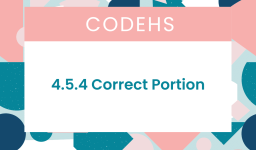The most common answer is:
Enter your code here
import math
value = int(input(“value -> “))
for i in range(value+1):
if not i == 0:
print(math.factorial(i))This code is designed to calculate and print the factorial of numbers from 1 up to a user-specified value. To ensure it adheres to Python syntax standards, including the use of standard ASCII quotation marks, here’s your code formatted correctly:
import math
value = int(input("value -> "))
for i in range(1, value + 1): # Start from 1 to avoid calculating the factorial of 0
print(math.factorial(i))
This code will:
- Prompt the user to enter a value.
- Calculate and print the factorial of each number from 1 up to the user-specified value.
Note: The modification of the range to start from 1 instead of 0 simplifies the loop by eliminating the need for the if not i == 0 check, as the factorial of 0 is defined to be 1, and it’s a common mathematical concept.



